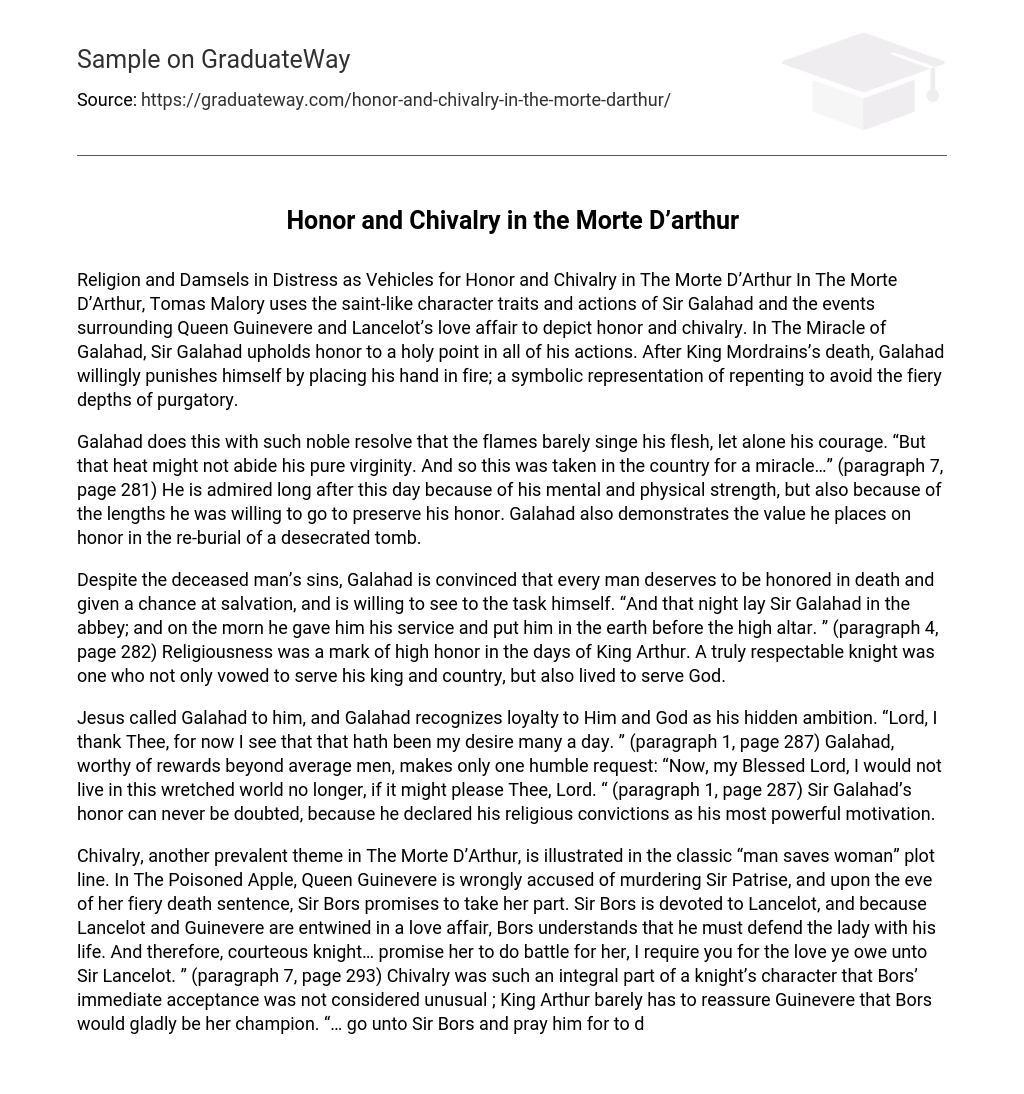Religion and Damsels in Distress as Vehicles for Honor and Chivalry in The Morte D’Arthur In The Morte D’Arthur, Tomas Malory uses the saint-like character traits and actions of Sir Galahad and the events surrounding Queen Guinevere and Lancelot’s love affair to depict honor and chivalry. In The Miracle of Galahad, Sir Galahad upholds honor to a holy point in all of his actions. After King Mordrains’s death, Galahad willingly punishes himself by placing his hand in fire; a symbolic representation of repenting to avoid the fiery depths of purgatory.
Galahad does this with such noble resolve that the flames barely singe his flesh, let alone his courage. “But that heat might not abide his pure virginity. And so this was taken in the country for a miracle…” (paragraph 7, page 281) He is admired long after this day because of his mental and physical strength, but also because of the lengths he was willing to go to preserve his honor. Galahad also demonstrates the value he places on honor in the re-burial of a desecrated tomb.
Despite the deceased man’s sins, Galahad is convinced that every man deserves to be honored in death and given a chance at salvation, and is willing to see to the task himself. “And that night lay Sir Galahad in the abbey; and on the morn he gave him his service and put him in the earth before the high altar. ” (paragraph 4, page 282) Religiousness was a mark of high honor in the days of King Arthur. A truly respectable knight was one who not only vowed to serve his king and country, but also lived to serve God.
Jesus called Galahad to him, and Galahad recognizes loyalty to Him and God as his hidden ambition. “Lord, I thank Thee, for now I see that that hath been my desire many a day. ” (paragraph 1, page 287) Galahad, worthy of rewards beyond average men, makes only one humble request: “Now, my Blessed Lord, I would not live in this wretched world no longer, if it might please Thee, Lord. “ (paragraph 1, page 287) Sir Galahad’s honor can never be doubted, because he declared his religious convictions as his most powerful motivation.
Chivalry, another prevalent theme in The Morte D’Arthur, is illustrated in the classic “man saves woman” plot line. In The Poisoned Apple, Queen Guinevere is wrongly accused of murdering Sir Patrise, and upon the eve of her fiery death sentence, Sir Bors promises to take her part. Sir Bors is devoted to Lancelot, and because Lancelot and Guinevere are entwined in a love affair, Bors understands that he must defend the lady with his life. And therefore, courteous knight… promise her to do battle for her, I require you for the love ye owe unto Sir Lancelot. ” (paragraph 7, page 293) Chivalry was such an integral part of a knight’s character that Bors’ immediate acceptance was not considered unusual ; King Arthur barely has to reassure Guinevere that Bors would gladly be her champion. “… go unto Sir Bors and pray him for to do battle for you for Sir Lancelot’s sake, and upon my life he will not refuse you. ” (paragraph 12, page 292)





